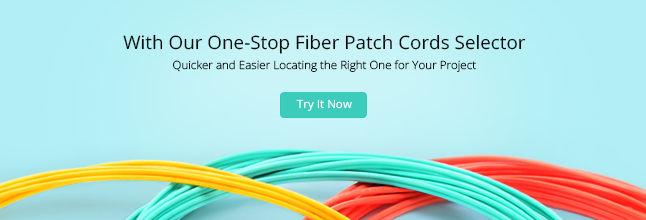Upgrade Your Network With OM3 and OM4 Multimode Fiber Cables
With each passing year, demand for higher data rates in data center environments increases. More and more sophisticated equipment is introduced into the marketplace and more users need access to data center services. These new increased data rates will require cleaner signals for transmission of laser pulses on multimode fiber. Currently, there are two types of multimode fiber jumpers—OM3 and OM4 patch cables. This article will explain how they provide optimum choices to enhance network reliability and performance in great detail.
OM here refers to optical multimode, and multimode fiber has been widely employed in data centers nowadays since it presents a cost efficient option for short distance transmission. OM3 and OM4 are both laser-optimized multimode fibers with 50/125um core, which are designed for use with 850nm VCSELS (vertical-cavity surface-emitting laser) and are developed to accommodate faster networks such as 10, 40 and 100 Gbps. Compared with OM1 and OM2 patch cables, OM3 and OM4 patch cables are undoubtedly more suitable for today’s demanding networks as they enable data to transport at higher rate and longer distance.
The IEEE 802.3ba 40/100G Ethernet Standard was ratified in June 2010, which provides specific guidance for 40/100G transmission with multimode and single-mode fibers. According to the standard, OM3 and OM4 are the only multimode fibers included in it. And they are massively applied to upgrade the legacy infrastructure, especially for migrating to high-density networks. So, how can we exactly benefit from OM3/OM4 patch cables?
- Higher Bandwidth First and foremost, bandwidth is the main reason why OM3 and OM4 patch cables are used for network upgrades. OM3 and OM4 patch cables are optimized for 850nm transmission and have a minimum 2000 MHz∙km and 4700 MHz∙km effective modal bandwidth (EMB). Compared with OM1 and OM2 patch cables with the maximum 500 MHz∙km, advantages of OM3 and OM4 are obvious. With a connectivity solution using OM3 and OM4 cables that have been measured using the minimum EMB calculate technique, the optical infrastructure deployed in the data center will meet the performance criteria set by IEEE for bandwidth.
- Longer Transmission Distance The impact that transmission distance of fiber patch cables has on the data center cabling cannot be overestimate. And the manageability and flexibility will increase parallelly with longer transmission distance. OM3 and OM4 patch cables can support longer transmission distance compared with traditional multimode fibers. Generally OM3 fibers can run 40/100 Gigabit at 100 meters and OM4 fibers can run 40/100 Gigabit at 150 meters.
- Lower Insertion Loss Insertion loss has always been an essential factor to be considered during data center cabling. This is because the total connector loss within a system channel impacts the ability to operate over the maximum supportable distance for a given data rate. As total connector loss increases, the supportable distance at that data rate decreases. OM3 patch cable is specified to a 100m distance with a maximum channel loss of 1.9dB, which includes a 1.5dB total connector loss budget. And OM4 patch cable is specified to a 150m distance with a maximum channel loss of 1.5 dB, including a total connector loss budget of 1.0 dB. In this way, OM3 and OM4 patch cables help to achieve maximum flexibility and longer supportable transmission distance.
Apparently, OM3 and OM4 patch cables offer us an ideal alternative to upgrade the existing infrastructure. A question may occur to us is to determine which one is better. Well, it depends on several factors. Among which the applications and the total costs always serve as major ones. Due to the difference in the construction of fiber cable, OM4 patch cable has better attenuation and higher bandwidth of longer distance. Moreover, the cost for OM4 is higher than OM3. As 90% of all data centers have their runs under 100 meters, OM3 may be a better choice. However, considering future growth, the overall cost would come down with the increasing demand. In this case, OM4 might be the most viable option.
OM4 fiber has been on the market since 2005, sold as premium OM3 or OM3 fiber. The OM4 designation standardizes the nomenclature across all manufacturers so that the customer has a clearer idea of the product that they are purchasing. OM4 is completely backwards compatible with OM3 fiber and shares the same distinctive aqua jacket. With either OM3 or OM4 patch cable, you are capable of upgrading the existing infrastructure to achieve more reliable and flexible network performance. When choosing between these two types of patch cables, you’d better make the decision according to your particular needs.
